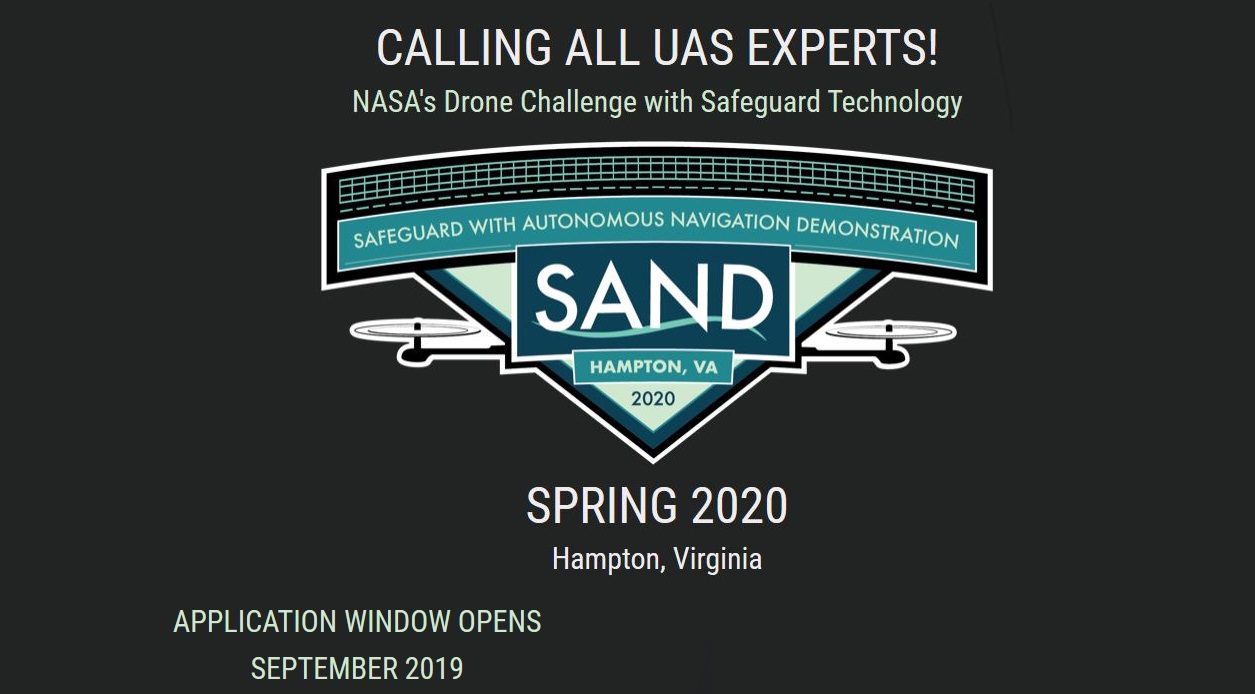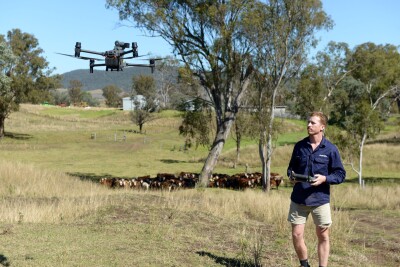One of the amazing features of the drone industry is that so many different types of people and organizations are working to safely integrate the technology into the airspace. That goes from tiny start-up companies to huge organizations like the Federal Aviation Administration (FAA) and the National Aeronautics and Space Administration (NASA).
How many other industries have this sort of scope? How many other industries have the support of the regulator and the technical expert agency in this way? That support these agencies offer the industry is about to be taken to another level though.
As an example of NASA’s commitment to unmanned aircraft vehicle (UAV) safety, they have created the Safeguard with Autonomous Navigation Demonstration (SAND) Challenge. It is unique in its approach to invite small businesses to participate and compete in an autonomous UAV competition. The challenge will address some of the safety-critical risks associated with flying UAVs in the National Airspace System (NAS): 1) flight outside of approved airspace and 2) unsafe Proximity to people or property.
NASA’s Technology Transfer Program, managed by the Space Technology Mission Directorate (STMD), ensures that technologies developed for missions in aeronautics and space exploration and discovery are broadly available to the public, maximizing the benefit to the Nation. At NASA Langley, the Strategic Technology Partnerships program, in the Office of Strategic Analysis, Communications, and Business (OSACB), through STMD, is the sponsor of this work.
The SAND Challenge is a pathfinder approach to engaging small businesses early in the commercialization process to accelerate technology adoption. Through participation in the SAND Challenge, small businesses and regulatory stakeholders (city, state and federal) will see the potential capability of BVLOS operations through the integration of Safeguard on UAVs.
Beyond visual line of sight operations (BVLOS) is the holy grail of UAV operations. The stretch goal of the SAND challenge is to demonstrate that UAVs integrated with NASA Langley’s patented
Safeguard is a verified and validated independent system that uses real-time data about the position of a UAV to determine its proximity to a set of pre-defined and pre-loaded lateral boundaries and an altitude limit.
The SAND Challenge will demonstrate the successful integration of the NASA Safeguard technology in the context of a post-natural disaster scenario amidst critical infrastructure. The SAND Challenge will be held in May of 2020 in Hampton, Virginia. The challenge will follow the Federal Aviation Administration (FAA) Part 107 Regulation Small Unmanned Aircraft Regulations provided in the Resource tab of the Competition Basics page on the SAND2020 Website.
The competition will follow a strict itinerary as follows:

We encourage our readers to get involved and participate. Who knows, you might be sitting on a technology that will be adopted by NASA and sanctioned by the FAA to contribute to the integration of UAV’s into the NAS and allow drone technology to thrive in this new era where manned and unmanned aircraft safely share the airspace.














Comments